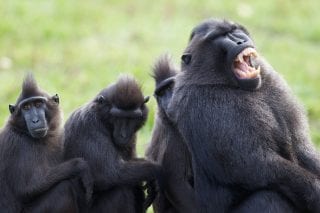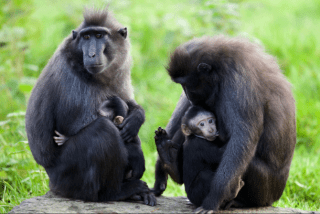Fun facts
Secret snacks
If feeding in a dangerous area, Sulawesi crested macaques will stuff their cheek pouches with food which they will eat later in a safer place!
Bottoms up!
Sulawesi crested macaques embrace and sniff each other's rear end as a form of greeting!
Communication
Communication among Sulawesi crested macaques consists of a variety of vocalisations and postures, used for different situations. This includes grunting while grooming each other, males showing their large canine teeth to assert dominance, staring, cackling, smacking their lips and many more.


